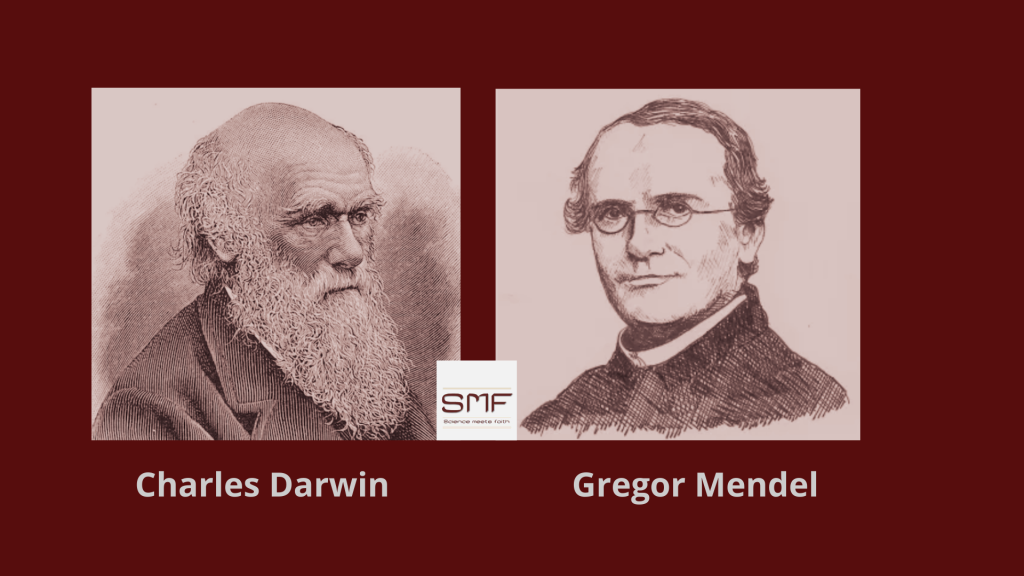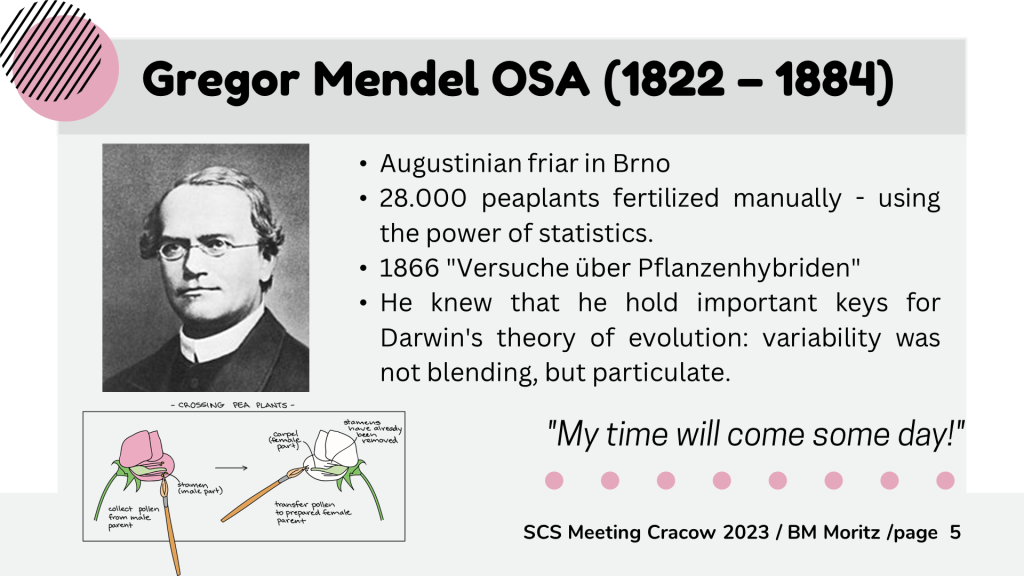
Darwin’s Origin of Species took many years of compilations and it was even accelerated by Alfred R. Wallace paper on the same subject in 1858. Origin of Species was really groundbreaking, because Darwin not only proposed common ancestry – that was in the air since Humboldt and Lamarck, and “Vestiges of the Natural History of Creation” -, but he proposed also a process for the underlying mechanism of the diversity of species.
His theory of evolution had 2 principles: common ancestry and natural selection. Natural selection can be described with 5 words: Variation, Inheritance, Selection, Time, Adaptation. Inherited variability and a selection pressure to adapt to the environment.
In Darwin’s time, the source of inherited variability was unknown. Darwin considered heredity as a “blending” process and the offspring were seen as essentially a “dilution” of the different parental characteristics.
But there was one person who knew otherwise: the Augustinian friar Gregor Mendel. Mendel began his experiments in pea plants (Pisum sativum) which had been shown to be purely bred varieties. He tried to determine whether it was possible to obtain new variants by crossbreeding, using different traits (like purple and white flowers, and round and square seeds). Peas were a good choice chosen as pollination could be easily controlled and pea plants are normally self-fertilizing. His research involved tedious planning, the use of thousands of experimental plants (28.000), detailed notes, a time frame of over eight years, and the use of statistics in the setting of biology. He proved the existence of paired elementary units of heredity (factors).

In 1866 published his paper “Versuche über Pflanzenhybride” postulating what we call today the laws of heredity: traits were distributed in specific ways in the first off-spring generation (all have the same appearance (purple flowers, called F1, cross-fertilization) and the second off-spring generation (via self-fertilization) showed a characteristic 3:1 spilt in traits that resembled the parent generation. Inheritance was therefore particulate. He established what we call genotype and phenotype today (the term comes from Johannsen 1909). In addition, he analyzed seven different traits and showed that each trait was independently sorted into the gametes and the next generation. Thus genes are the smallest particulates in inheritance.
